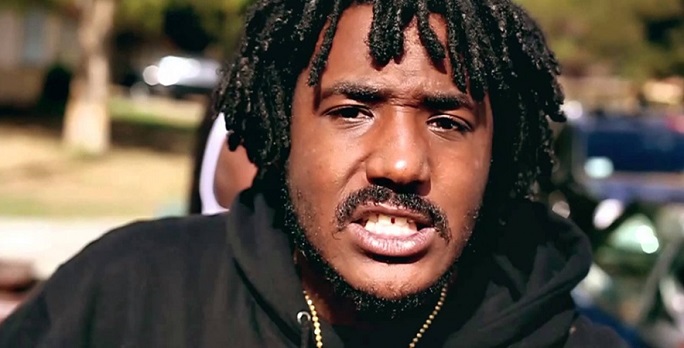Method Man Net Worth 2026 + Bio, Age, Height
Rap scene is full of interesting characters and people who made an empire from scratch. One of those people is Method Man. Method Man was the first – and the biggest – solo star of the Wu-Tang Clan group. His unmistakable style, reminiscent of Erick Sermon of EPMD, and his easy rhymes have made him an unpredictable MC within the group. Even so, his personality is more reserved than that of the Wu canon, Ol ‘Dirty Bastard.
Method Man is completely sure that people not only know who he is, but also appreciate what he is capable of doing, proof of this are his three albums with Wu (“Wu TangForever” in 97, “The W” in 2000) and “Iron Flag” in 2002). We will dig deeper into his career and his personal life, so if you are interested, keep on reading more.
Early Years
Method Man, whose real name Clifford Smith, was born on April 1, 1971 in Hempstead, New York (United States). Separation from their parents and disturbing it is difficult to know the adolescence between tomorrow without employment or money to buy drugs. Writing and hip-hop are his true passions.
It is early to observe his lyrics and his wealth and become a member of the collective Wu-Tang Clan in the early nineties to ten. The group will release five albums between 1993 and 2007, Method Man in which it is always present. However, in that only Method Man will receive the greatest success.
In 1994, with his first album “ticos” a blow is achieved. The album sold more than a million copies and marks the beginning of a long success. Along with music Method Man also tries movies. Since 1997, he toured in a dozen films. 1999 reunion of the two rappers, Method Man and Redmann gives a surprising result on the album “blackout”. Both, therefore, work together to get results from some of the most American rap pages. In 2009, the Lascars performed the album “Blackout! 2” in 2010 and returned to Method Man alone with “Crystal Method”…
Education all the more difficult as it is interspersed with absences more or less prolonged during his higher education, the young man is caught up in the sordid daily and populated by artificial substances that he quickly starts to broadcast and consume . He is saved by his sound companions who quickly reclaim the island, renaming it Shaolin Island because of the kung-Fu feature films they watch continuously in thunder stormed cinemas, and which they soon populate their world of rapology .
Career Path
His childhood was spent with his father in Long Island, and with his mother in Staten Island. He started writing very small letters. He debuted disco graphically with the maxi “Method Man” with Wu-Tang Clan. Chance brought him closer to Genius / GZA, and Ol ‘Dirty Bastard. When they started to form the hip-hop collective, in the early 90’s, Method Man was one of the first to sign. Meth made his appearance in the group’s classic – the debutante Enter the Wu-Tang’s (36 Chambers) from 1993, he even had a song of his own “Method Man,” which provided him with a well-deserved recognition
At the end of the 90 ‘he made frequent his collaborations with Redman; they not only united them to work in music, they became a team full of humor on the big screen. Thanks to the innovative contract of the Wu – which allows group members to sign contracts with the label they choose to get their jobs alone – Method Man signed a contract with Def Jam and in 1994, approximately one year after the release of Enter the Wu-Tang’s, became the first member of the Wu to release his solo album.
Fantastic microphone, easy to look at, hot on stage, cool on the screen, Method Man has become more than just a rapper, he’s still the last rapper in the game. It boasts an unpredictable yet recognizable lyrical style, with a wide range of tones that range from intimidating smoothly to the most vocal desperate Meth has brought pain and has risked to the maximum waiting to make his next move.
He began his solo career with “Tical” in 1994. Then came “Tical 2000 Judgment Day-Blackout” in 1998 and in 1999 the collaboration he made with Redman, your partner in the ‘crime and rhyme’ (crime and rhymes). After triumphing with “Tical” Meth began to collaborate with all kinds of artists and producers: 2Pac, DMX, Notorious Big, Canibus, Busta, etc. Method demonstrated its great innovative capacity, “Tical 2000”, in a high voltage production by Erick Sermon y Rza.
In addition to his appearances as a guest in the work of other colleagues such as Mary J Blige, with whom he collaborated in his successes “I’ll Be There For You / You’re All I Need To Get By” (Grammy winner) and the currently devastating “Love @ 1st Sight”, as well as other collaborations in films like “Oz”, “The Wire” or “How High”.
Of course, his fans know that Meth has been destroying them not only with his records. During the last years Method has established itself as a necessary presence on the screen, in the field of comedy, in the style of “How High” in 2002 (which he starred with Redman), or with his appearance in his debut film ” Belly “in 1998, in addition to other appearances in ‘Oz’ and ‘The Wire’.
The American rapper and producer Method Man continues to surprise his audience with his talent and music, as he recently released his album Meth Lab Season 2: The Lithium, a record that is characterized by being full of energy and hard rhymes.
Method Man has a solid career in the international rap scene; and has become a legend of rap, is also recognized for being part of the East Coast hip hop collective Wu-Tang Clan. It should be noted that this is the rapper’s sixth studio album; a disc that is integrated by 22 subjects between songs and small cuts, where also counts on the collaboration of its colleagues, like Noreaga, Redman, Sheek Louch and Snoop Dogg, among others.
Throughout his career he has had great achievements. In 1996, the rapper won a Grammy in the category of Best Performance by Duet or Group for his single I’ll Be there for you / you’re all the need to get by with the collaboration of Mary J. Blige. It currently has more than two million monthly listeners on Spotify with songs that exceed 15 million views.
Personal life
There was a time in the early nineties that Method Man was one of the favorites of the scene to approach the status of Biggie or 2pac. His ability to rhyme, his particular and recognizable voice, his collaborations with both and be something like the leader at the microphone of Wu-Tang Clan made us think that his future would be close to that position in the stars.
And it is not necessary to do an excessive exercise of memory to recognize that in 92 and especially since 1993 the band that belonged the good of Meth was something like a revolution in the panorama, the samples of what then we would know like Shaolin Soul (and of those that you can enjoy in our official facebook) to the Atari sounds, the voices of classic Kung-Fu movies and the image of a super group formed by eight mc’s whose average skill in the microphone was between remarkable and outstanding.
Among all of them and at the beginning of the explosion of the band the most popular was Method Man, a master of ceremonies, that although it ended up giving less than what was expected by an irregular discography alone, we are all (and were) of agreement in his narrative skill in front of the microphone.
The good guy Clifford Smith aka Method Man had always been one of those guys who stand out. Already on the debut album of Wu-Tang Clan, Enter the Wu-Tang (36 Chambers), is one of the two components that already had a solo theme. It would not be surprising that Method’s solo album was the first to come out in the light of a series of solo albums that would encompass all clan members.
As a curiosity, Wu-Tang Clan’s contract with the record company with which they had signed as a collective, Loud Records, allowed Clan members to sign alone with the label they deemed convenient. So at the end of 1994, for taste and enjoyment of our end of the year party, Def Jam would put on sale the Tical of Method Man, an album as long awaited as strange and a piece as interesting as out of place today commercially speaking in a hip hop market more concerned with fashion and being much more aesthetically and musically accessible to the white and American teenager than twenty years ago.
The album would have a couple of singles that worked quite well, “Bring the Pain” (this track would be sampled only a couple of years later by Devanté Swing to compose 2Pac the “No More Pain” beat included in All Eyez On Me) and “Release Yo Delf” (and his nod to “I Will Survive” by Gloria Gaynor).
Once the album was published, the icing on the cake would appear (with pardon), which would be the maxi “I’ll Be There for You / You’re All I Need to Get By”, with its differences in production with respect to the version of the disc to the single and the video clip. With the collaboration of Mary J. Blige and co-produced by Puff Daddy, this hit would help the album become certified as a platinum album and its clip is still in our memory with Meth and his half head with cornrows and a half without them .
The song would be awarded in 1996 for best rap performance by duo / group and would give Mr. Smith a commercial fame well above the strictly hip hop fan base and the proof of it are his different incursions into film and television.
The weight of the production falls on RZA, who would control this album as the majority of Wu-Tang material as a group as soloists in this early period. Coproduced 4th Disciple in “Sub Crazy” and Meth himself in “PLO Style”, without much difference in the overall appearance of this reference. The album is musically in the line of the 36 Chambers with an even darker and monotonous touch, something that although it seems counterproductive fits perfectly with the timbre of voice and the rhyming style of the MC.
Beats repetitive, almost minimalist, with a list of samples that today would be difficult to validate and in which from the theme that opens the album (and that gives its name) we can see. We find in Tical collaborations of other members of Wu-Tang Clan [Raekwon, Inspectah Deck or the very RZA] as well as artists whose names will be associated with Staten’s from this moment [Blue Raspberry, Carlton Fisk and the omnipresent Street life].
Tical, while not an outstanding album, will delight any rap fan in general and the nostalgic ones of the nineties in particular, especially those with a darker and more linear sound and the fans of the WU sound that would later come out stronger (and improved) in Raekwon’s Only built for cuban linx (the first part, not the second). The moderately sad thing is that Method Man has not been able to capture his talent in a solo effort as he did with this first LP.
From then until today his collections are a want and I cannot in an attempt to recover the musical mojo that would lose when they granted him that Grammy cursed and the rapper wanders between his appearances in more commercial films and his pseudo eclectic albums to which we have already given each other an opportunity and that no longer seem to interest “almost” anyone.
Tical is the best talent show and choice of musical productions of an artist who was destined to become a legend of rap and who remained in an immense talent whose albums have rarely returned to reflect it. Just in case and if you have the opportunity, do not stop watching your show live either alone, with Redman or with Wu-Tang Clan, you will not regret it.
Quick summary
Full name: Clifford Smith
Date of birth: April 1, 1971
Birthplace: Hempstead, New York
Age: 48
Profession: Rapper, songwriter
Height: 1.80m
Weight: 82 kg
Net Worth: 14$ million







